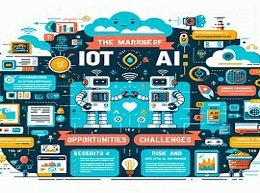The Role of Explainable AI in Building Trustworthy Models

Explainable AI (XAI) has emerged as a critical element in the development of trustworthy and accountable machine learning models. This article unravels the significance of Explainable AI, delving into its role, real-world examples, and the impact it has on building trust in the world of artificial intelligence.
1. Trustworthy AI in the Age of Complexity:
Embark on a journey into the complex landscape of artificial intelligence. Explore the challenges surrounding trust in machine learning models and the pivotal role of Explainable AI in addressing these concerns.
2. The Need for Explainability: Demystifying Machine Decisions:
Delve into why explainability is crucial in AI. Understand how complex algorithms can make decisions that seem inscrutable, and how Explainable AI demystifies these decisions, making them interpretable for users.
Example: A credit scoring model denying a loan application without providing clear reasons, leaving the applicant in the dark.
3. Transparency in AI: A Foundation for Trust:
Explore how transparency forms the foundation of trust in AI systems. Discuss the importance of providing users with insights into how models arrive at decisions, fostering a sense of accountability and reliability.
Example: A healthcare AI system providing doctors with clear explanations for diagnostic recommendations, enabling informed decision-making.
4. Explainable AI Techniques: Shedding Light on the Black Box:
Delve into various techniques employed in Explainable AI. Explore methods such as LIME (Local Interpretable Model-agnostic Explanations) and SHAP (SHapley Additive exPlanations) that help interpret and explain model predictions.
Example: LIME generating human-understandable explanations for individual predictions, making black-box models interpretable.
5. Real-world Impact: Building Trust in AI Applications:
Explore real-world examples where Explainable AI has a profound impact. From finance to healthcare, uncover instances where transparent models enhance user confidence and acceptance.
Example: A predictive policing model providing clear reasons for identifying high-risk areas, allowing law enforcement to make informed decisions.
6. Legal and Ethical Implications: Navigating Accountability:
Examine the legal and ethical implications of Explainable AI. Discuss how regulations, such as the General Data Protection Regulation (GDPR), emphasize the right to an explanation and the responsibility of AI developers to provide transparency.
Example: GDPR requiring companies to explain automated decisions, ensuring users have the right to understand and challenge these decisions.
7. User-Friendly Explanations: Bridging the Gap with Accessibility:
Explore the importance of presenting explanations in a user-friendly manner. Discuss the role of accessible and comprehensible explanations in fostering user trust and confidence in AI systems.
Example: An AI-driven language translation app providing users with clear explanations of how it arrived at specific translations, increasing user confidence in the tool.
8. Challenges in Explainable AI: Balancing Complexity and Simplicity:
Delve into the challenges associated with implementing Explainable AI. Discuss the balance between providing sufficient information for understanding and avoiding overwhelming users with complex technical details.
Example: Striking a balance in a facial recognition system by explaining the factors influencing a decision without overwhelming users with technical details.
Explainable AI stands at the forefront of building trust in the increasingly intricate world of artificial intelligence. By demystifying machine decisions, providing transparent insights, and addressing ethical considerations, Explainable AI becomes the cornerstone of accountable and trustworthy AI systems.
Explore the pivotal role of Explainable AI in demystifying machine decisions. Real-world examples reveal how transparency fosters trust in AI models for a smarter, accountable future.














